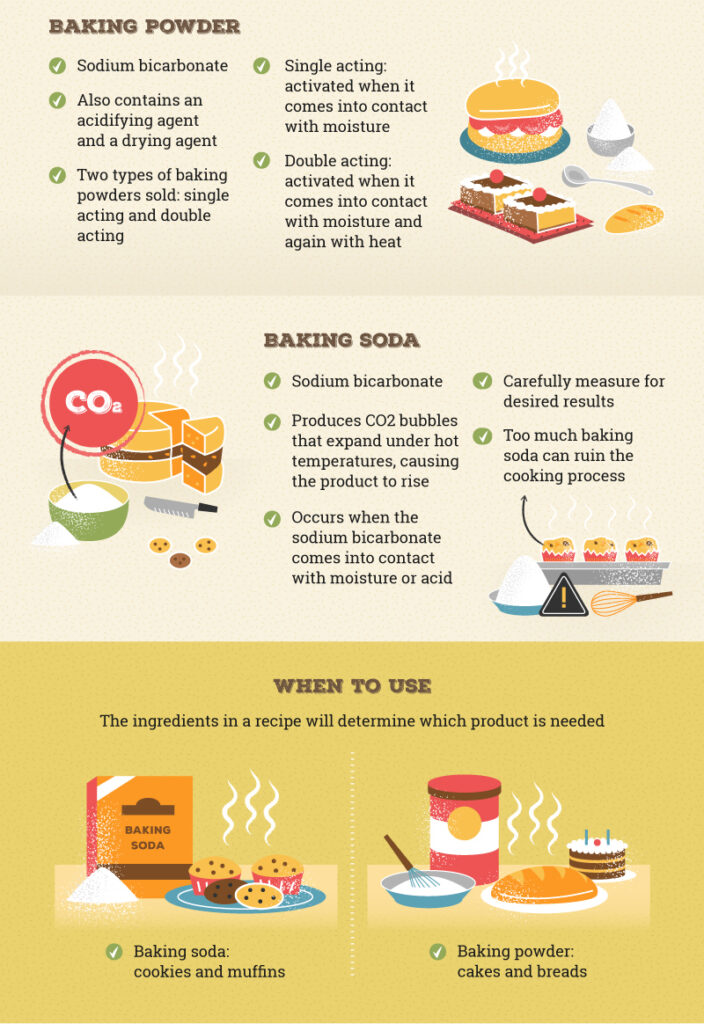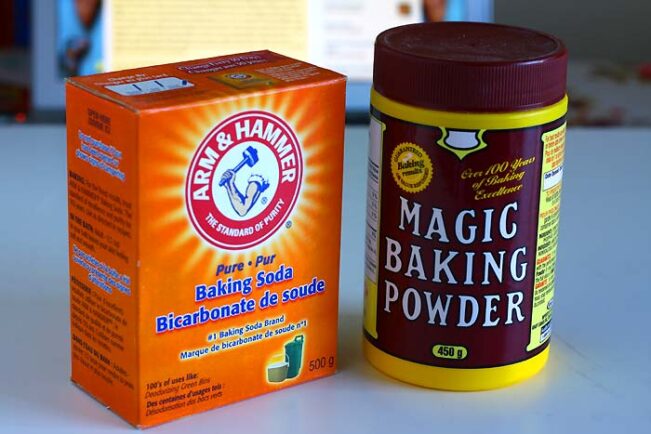
One of the most confusing subjects when it comes to baking is the difference between baking powder and baking soda.
It is important to know that baking powder and baking soda are absolutely not the same. Even though they are both leaveners, they are chemically different.
Baking Soda
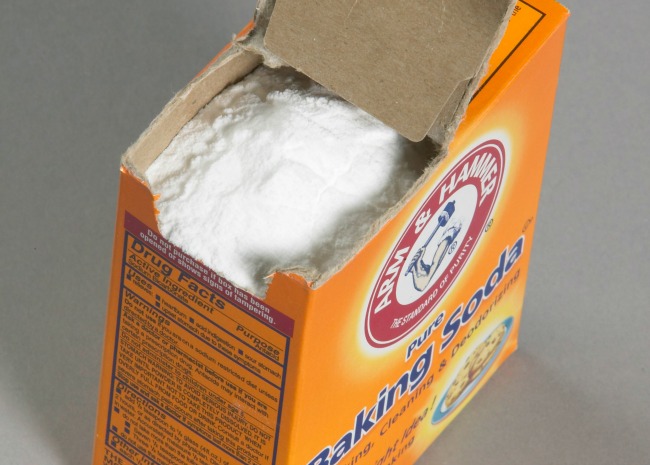
Aka: bicarbonate of soda or sodium bicarbonate
Let’s start with baking soda because it’s the most confusing. Baking soda is a BASE. Flash back to high school chemistry class with a terrible looking volcano model. We all mixed vinegar with baking soda to see the reaction in the form of an eruption of bubbles. When you mix a base (baking soda) with and acid (vinegar), you get a chemical reaction (an eruption of bubbles). A product of this reaction is carbon dioxide.
The exact reaction occurs in our baking. Notice, whenever a recipe calls for baking soda (BASE), it will usually also call for some type of ACID – Cue the brown sugar, yogurt, buttermilk, lemon juice, vinegar, cream of tartar, molasses, applesauce, natural cocoa powder (not dutch process), or honey. In order to have the baking soda react, you need the acid – which in turn creates carbon dioxide and allows your baked goods to rise.
Baking soda is about 3-4 times stronger than baking powder. More baking soda in a recipe doesn’t necessarily mean more lift. You only need enough to react with the amount of acid in the recipe (balance is key). Too much baking soda and not enough acid usually mean that there will be leftover baking soda in the recipe. If that happens, it can create a metallic, soapy taste in your baking.
Tip: Usually for every cup of flour in a recipe, use around 1/4 teaspoon of baking soda.
Baking soda CAN leaven a baked good when exposed to heat. But, in order to avoid the metallic aftertaste (as stated above), you will need to neutralize it with an acid,
Baking Powder
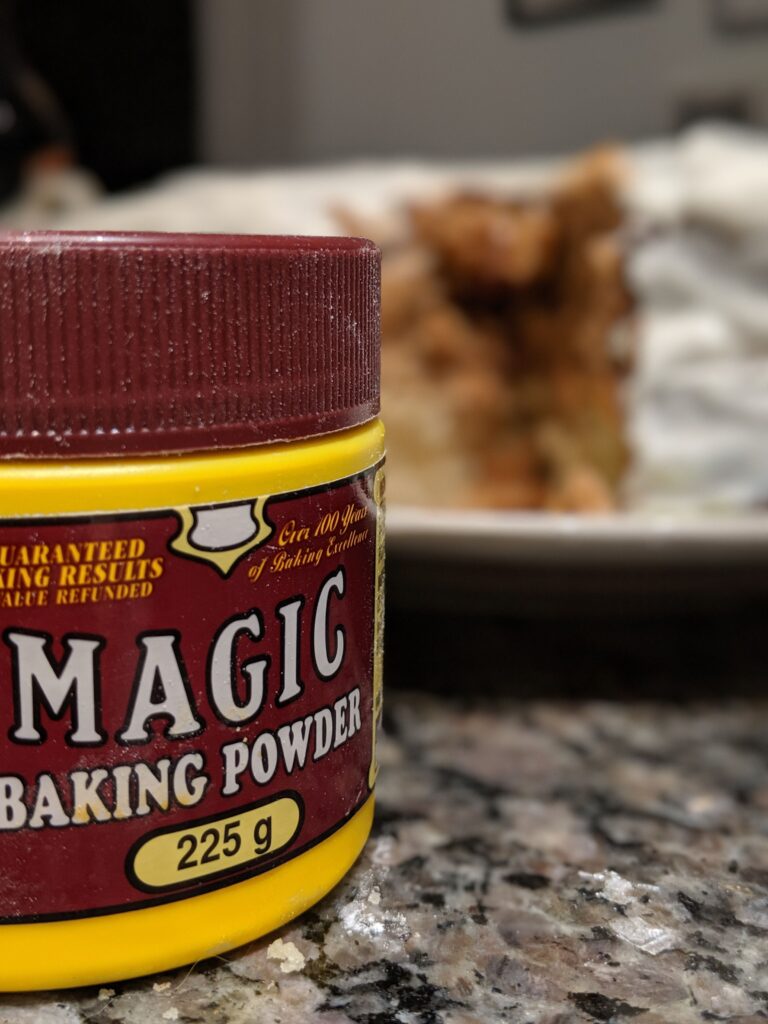
Baking powder is a mixture of baking soda, cream of tartar (a dry acid), and occasionally cornstarch. Generally, most baking powder you will buy is double acting. This means that the leavening happens in 2 phases. The first occurs when the baking powder gets wet – like when you combine the dry and wet ingredients in the recipe. (This is why you cannot prepare some batters ahead of time to bake later– because the baking powder has already been activated.) The second leavening happens with the introduction of heat.
Since baking powder already contains an acid to neutralize its baking soda, it is most often used when a recipe does not call for an additional acidic ingredient. However, this isn’t always the case. You can still use baking powder as the leavening agent in recipes calling for an acidic ingredient. Yes, it’s confusing.
Tip: Usually for every cup of flour in a recipe, use around 1 teaspoon of baking soda.
Why some recipes call for both
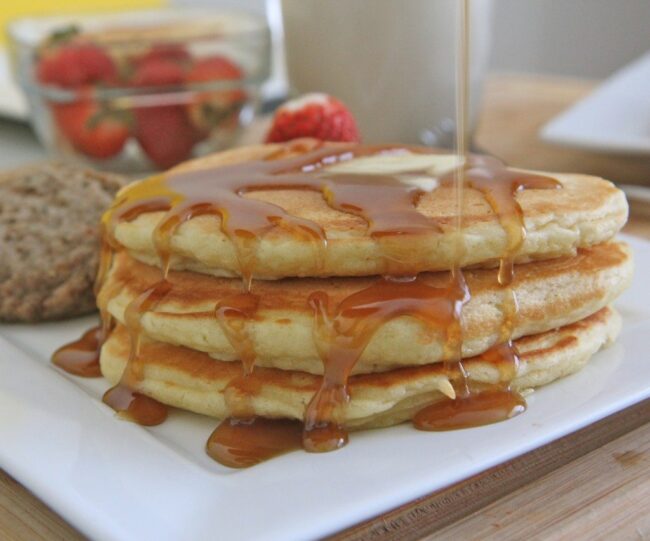
When you see a recipe call for both baking soda and baking powder, that generally means the recipe contains some sort of acid, however the carbon dioxide created from the acid and baking soda reaction is not enough to leaven the volume of batter in the recipe. In order to get the necessary lift, baking powder is added as well.
Basically, the reason for both is because sometimes you need more leavening than you have acid available in the recipe. Balance Is Key!
Another reason to use both baking powder and baking soda is because they both affect flavor and browning. Let’s take a buttermilk pancake recipe for example. Buttermilk is used partly for its tangy flavor; But, if you only used baking soda, it could neutralize all of the buttermilk’s acidity and you’d lose that tangy flavor. However, by incorporating baking powder as well, some of the buttermilk’s flavor gets left behind, and there is still enough leavening to give you a fluffy pancakes.
Substitution
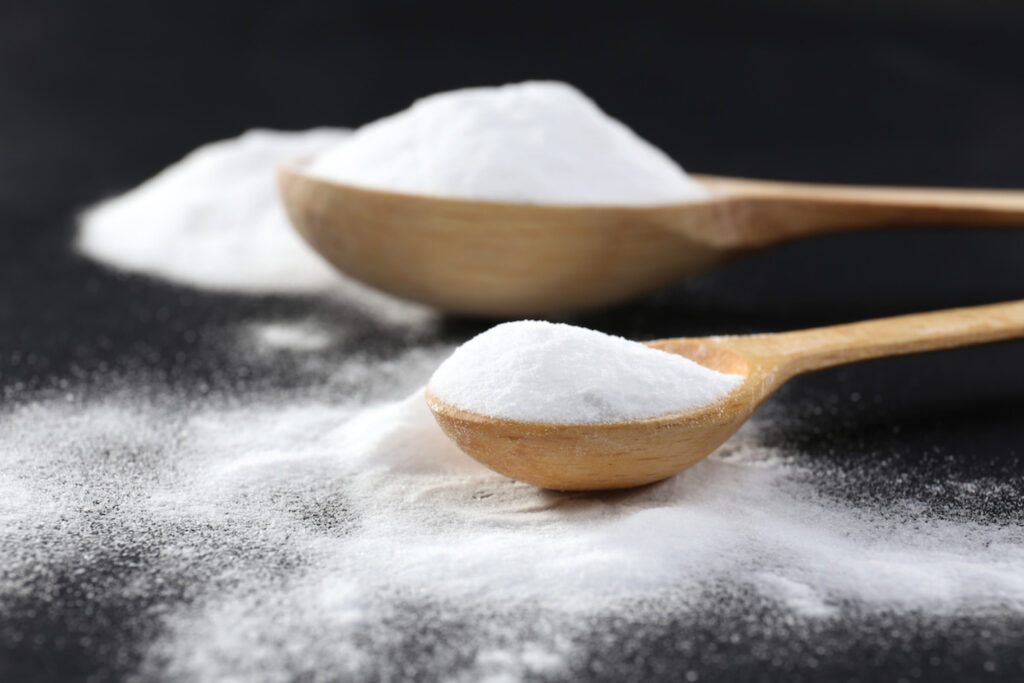
This is a tricky situation, which is why I don’t recommend it.
If the recipe calls for baking soda, you may be able to substitute baking powder. However, in order to get the same amount of levening, you will need up to 4 times as much baking powder. Also, depending on the recipe, with that much baking powder you might end up with a taste that’s a little bitter. You can substitute baking soda for baking powder only if you increase the amount of acid in the recipe – which more than likely will change the taste and texture of your baking. Since it is about 3-4 times stronger than baking powder, you’d need less baking soda.
Tip: Just stick to the recipe!
Expiration & Testing
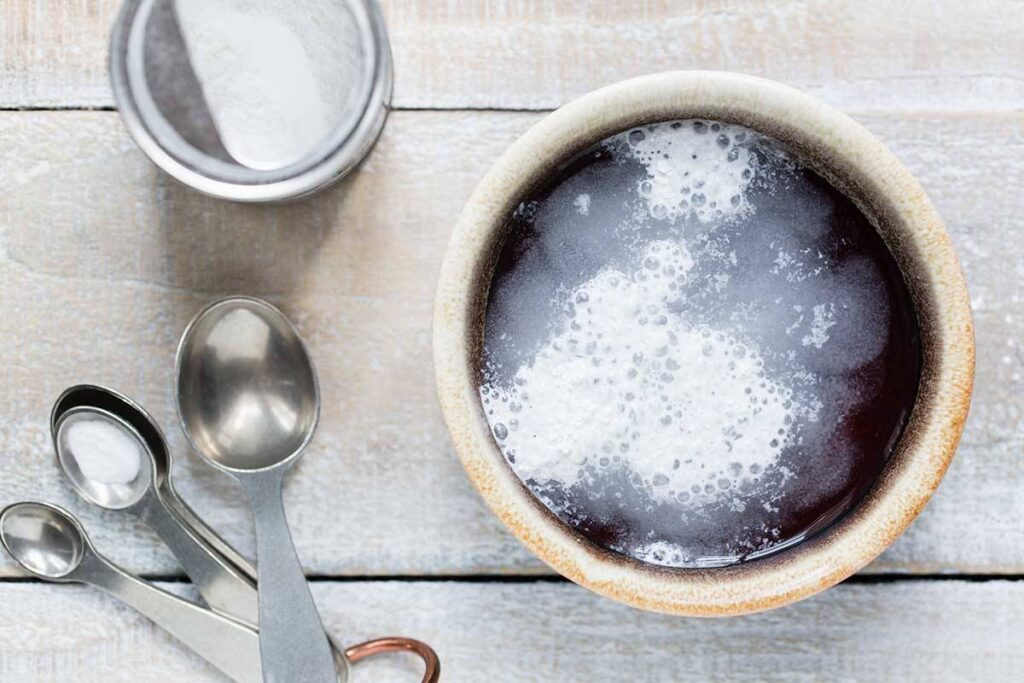
A good rule of thumb is to replace your baking powder and baking soda every 3-4 months, just to be sure they are always fresh. You should always date them on the bottom of the container. If you aren’t always baking, it’s a good idea to test your baking powder and baking soda for effectiveness before using.
Testing Baking Powder
Put 3 Tablespoons of warm water into a small bowl. Add 1/2 teaspoon of baking powder. Give it a little stir. If the powder is fresh, the mixture should moderately fizz. If there is no reaction, it’s time to get new baking powder.
Testing Baking Soda
Put 3 Tablespoons of white distilled vinegar into a small bowl. Add 1/2 teaspoon of baking soda. Give it a little stir. If the baking soda is fresh, the mixture should rapidly bubble. If there is no reaction, it’s time to get new baking soda.
